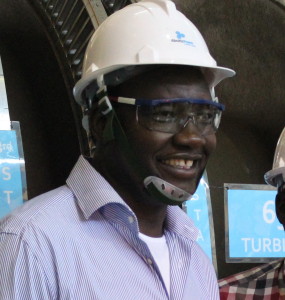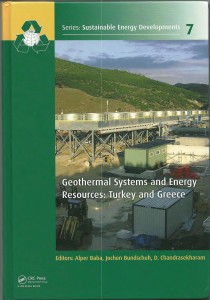It is interesting to read the news about China’s energy sector, in a recent article published in IEA journal, especially that supported by coal. A former scientist working with IEA analysed the coal utilization for electricity generation by China now and after 40 years. China has already announced that its coal utilization for electricity will peak between now and 2030 before it declines. China needs additional electricity to the tune of 2500 TWh in future. China will be prepared to face the challenge by offsetting coal use by nuclear and renewables. For its own good, China has to reduce CO2 emissions by reducing coal utilization for electricity generation. China is utilizing GSHPs for cooling and heating the buildings and initiated a concentrated effort to reduce CO2 emission. It has sufficient geothermal energy resources along its southern border and by the year 2040, China will be in a comfortable position in mastering the technique of harnessing the energy from the granites of Himalayas and the energy from water. Already the country started generating electricity from Brahmaputra river. Its eastern border, facing the sea will provide energy from wind. Besides all such sources, it has large volume of gas in the sea as well as along the southern border. In fact the country will be energy independent by 2040 while its neighbouring countries will be limping to cope-up with the demand. This situation arises due to the lack of planning and sound projections for future energy demand. The above analyses says that to meet 2500 TWh demand by 2040, China has to rise natural gas consumption by > 200 % and commission hundreds of nuclear power plants. This looks like a myopic view. The projected magnitude is large since by 2040 China will master the art of safely utilizing high level radioactive waste to create small generators that can be well within the control. Another 25 years!!….those who are analysing energy sector of China will not be living to witness the development or under development!!
The other side of the story from China’s Ministry of Land and Resources: The country has sizable amount of heat in shallow geothermal energy sources equivalent to 350 million tons of standard coal annually. If utilized for electricity generation it can generate 2.8 million GWh of electricity. After deducting the cost of electricity utilized for developmental activities, the geothermal energy sources could offset at least 250 million tons of coal and reduce carbon dioxide emissions to the tune of 500 million tons. China has geothermal energy reserves equivalent to 853 billion tons of coal. Under the present available technology and economics, usable heat available in the country is equivalent to 640 million tons of coal and this will reduce 1.3 billion tons of carbon dioxide. In addition to the wet geothermal sources, China has EGS resources equivalent to 860 trillion tons of coal that can generate 7 trillion GWh of electricity. By 2040 EGS technology will be in place and China’s available energy from renewables (EGS) will be able to generate 7 trillion GWh of electricity which is several thousands times more than the country’s annual consumption. Numbers are big…after all they are all projections. But one should not forget that China proved its capability during 2008 Olympics. This event clearly showed that the country can pursue both economic development and clean environment. Children born now will be witnessing the real story and they should /will be reading the current projections with amusement. For the China’s future generation everything is in place. But for its neighbours, the development graph will be a plateau …now and then. If governments are not able to fix tariff for projects that passed the PPA stage, what kind of development we expect in the power sector?
At the second IEA ministerial meeting held in 2011 in New Delhi, India made tall claims……addition of 75 000 MWe at the rate of 15000 MWe a year in the running five year plan. Besides this, addition of 15000 MWe from renewables and 13000 MWe from captive power plants. Four years have passed….where are we now. Any number of zeros can be added…it is easy but the ground reality is abysmal. People who made the claim are not in the office! The country is back to square one. Like China, India’s numbers are large. China is able to deliver, hence those number are valuable. Take for example the solar PV supported power. Just Sunshine is not a prerequisite for Solar PV. Land and water are essential. All the MENA east countries have Sunshine better than any other country in the world. Beside good oil reserves, why the countries are not utilizing Solar PV for domestic consumption and divert the oil for export? “Solar power systems present challenges in hot dusty conditions: dust impairs operations and efficiency falls at temperatures above 30 °C. A number of research establishments in the Gulf region are working on ways to tackle these problems” says Christopher Seger, Global Energy Policy expert in IEA in a recent article in IEA Journal. According to Paolo Frankl, Head of IEA Renewable energy Division, two renewable energy technologies, although are at the lower end of development, promise potential of exploitation which are tens and thousands of times greater than the current global energy demand!. They are ocean energy and enhanced geothermal systems. This is China’s trump card. Compared to China, India’s granite resources are several folds greater.

